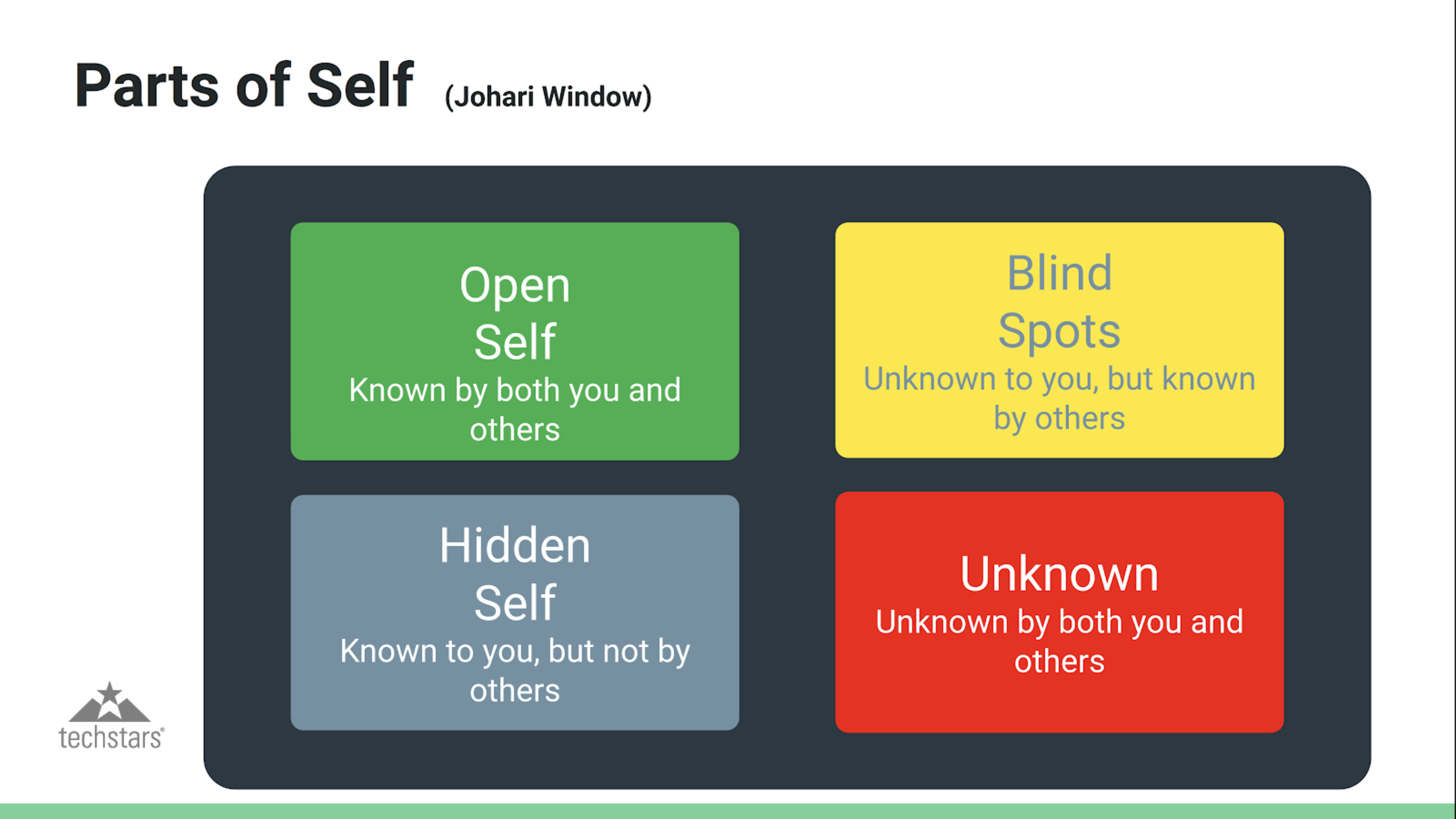Hello everyone, I’m Anna Barber, Managing Director of Techstars LA and executive coach. Today we are talking about emotional intelligence (EQ) and the role it plays in your success as a founder.
The emotional quotient, or EQ, is sometimes referred to as emotional intelligence. Throughout this module, I’ll use EQ and emotional intelligence interchangeably.
EQ is the ability to recognize, understand and manage your own emotions, and recognize, understand and influence the emotions of everyone around you.
Research suggests that EQ maybe twice, even four times, as important as intelligence (IQ) defined as hard skills in your success in the startup community. In the tech world, we place an inordinate value on hard skills, where you went to school and your role in a company.
However, soft skills are harder to train, and even more important in your overall success, than the hard skills, but they're difficult to identify and develop. This talk will focus on identifying soft skills and how to build them.
I believe that emotional intelligence is something that you can practice. Truthfully, we’re never done practicing and we're constantly working on the soft skills. Let's look at some of the different tools:
- Self-awareness
- Being present in work and life
- How to recognize and manage fear
- Using flexible thinking
- Getting and giving feedback
- Becoming a strong coach
We’re going to take these skills and apply them to situations where problems seem to show up, mainly in communication.
I believe that personal growth drives company growth, and the more you can develop these skills, the more effective and productive everyone will be. Let’s dive into EQ…
The definition of emotional intelligence is the ability to recognize, understand, and manage your emotions, and recognize, understand, and influence the emotions of others.
In practical terms, this means being aware that emotions drive behavior and impact people both positively and negatively, and learning how to manage them both others and ourselves is key - especially when we're under pressure.
Through his research, psychologist Daniel Goldman divided EQ into four quadrants.
Self-Awareness
Self-awareness is the ability to understand your own strengths and weaknesses and understand your core values. I ask you, what do you care about, what really drives you, what's your why, and what are the things that set you off?
It’s important to identify what triggers send you to the emotional part of your brain that inhibits the ability to think clearly. To be self-aware means you understand your triggers.
Self Management
This quadrant includes being able to stay calm and positive during an inner crisis and the ability to recognize and detach from feelings rather than letting them drive your behavior.
Good self-management allows us to focus under pressure, be adaptable, be in a state of continuous improvement, set high goals and reach for them.
Social Awareness
This quadrant starts with empathy and the ability to understand and share the feelings with someone else, including your team and customers. The next level of social awareness is being able to read a room. For example, when you walk into a room, you have the ability to understand the dynamics and see how people are relating to each other – this skill will help you improve communication.
Social Skills
The last quadrant is the Ninja-level EQ skill set that includes everything from being able to give and accept feedback, ability to build and inspire trust, and being an inspiring leader to understanding someone else's perspective and influence them.
This might surprise you, but many investors, myself included, ask questions around EQ before making an investment. When I evaluate a CEO and their EQ, I ask myself, is this someone I would work for and would be a good and inspiring leader? Sure, a founder’s pitch, deck, and product could be great, but is this someone I could follow?
Investing in your EQ is going to make you a more impactful leader and improve your investor and customer interactions.
If you look at the Cognitive Triangle from a leadership perspective, your actions impact what you think and what you do. Being self-aware can help you become more connected to what you’re feeling because your thoughts are driving your feelings and your actions.
As it relates to EQ, the idea that you could remove the emotion out of the equation, as some of us would like to do, and just be completely data-driven, it’s absolutely not realistic.
As a leader, you should not ignore your feelings, instead understand how thoughts, feelings, and actions work together and enhance your EQ skill set. By doing so, you have the tools to build better teams to have a greater impact on your customers and everyone around you.

